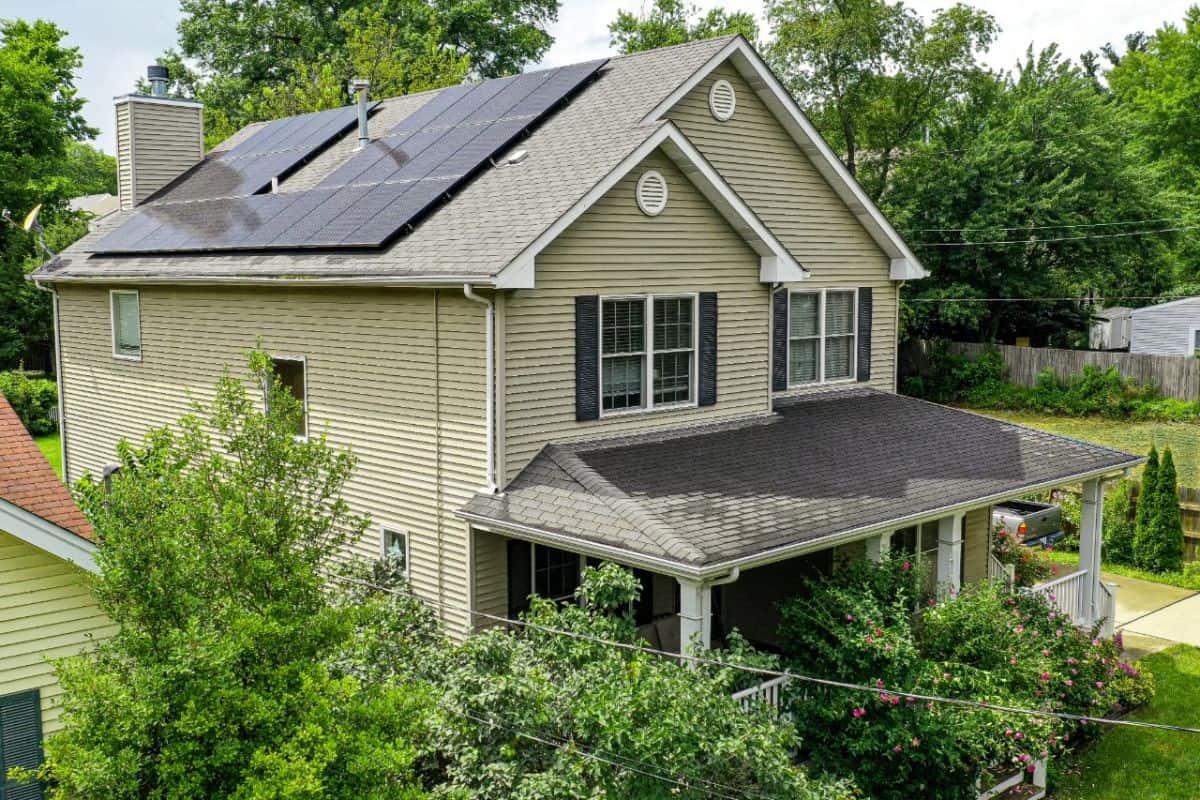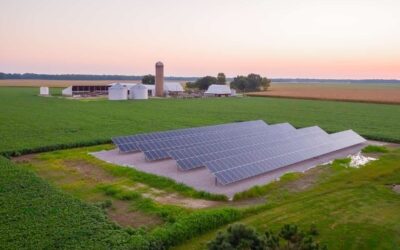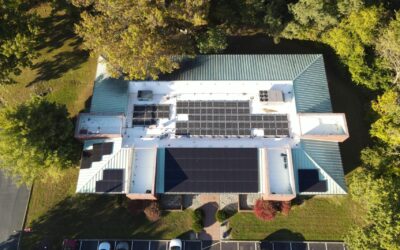Are you thinking about adding solar to your home? With over 2 million homes in the United States with solar now, many homeowners are recognizing how beneficial they are. If you’re considering having solar panels installed in your home and not sure where to start, then you’ve come to the right place.
We’re going to go over the details of how solar panels work and how many you might need for your home.
Let’s take a look.
How Do Solar Panels Work?
Simply put, solar panels absorb photons that then tap electrons free. Once they’re free from the atoms, it creates electricity! Solar panels take in light and directly turns it into a flow of electricity to use.
- Solar panel cells absorb sunlight
- They convert the light into DC power.
- All systems need some type of inverter (string, Micro or hybrid) to convert that power to AC power.
- The electricity is then sent through wires into your home
- That powers everything connected to it
- Any excess of electricity produced is then fed into the electric grid
Solar systems are not complicated and easy to understand once you have the basics down. Now that you understand how they work, let’s take a look at how long they last –
How Long Do Solar Panels Last?
In short, a quality solar panel can last up to 25 years or even longer. Solar panels are designed to live a long life in the elements outside.
Your typical solar panels come with a warranty that lasts 25 years, so you are guaranteed to reap the benefits for quite a long time.
According to a study conducted by the National Renewable Energy Laboratory, solar panels last 80% longer than their warranty.
This can save you thousands on utility bills down the road!
How many Solar Panels Do You Need?
To find out how many solar panels you’ll need for your home, you need to consider everything that uses power. Taking a look at your utility bill can also give you a good idea of how many you might need.
How Many Watts Do You Use?
When looking at your utility bill, you should be able to see kilowatt-hours (KWH). KWH for homes can vary greatly depending on location. A home in the south is more likely to draw massive amounts of energy from air conditioner units.
Finding the average daily energy usage will help you calculate your solar needs. Once you have your usage you can look at how much wattage you’ll need to be able to run everything.
Peak Sunlight Hours
Keep in mind that solar panels only work when they are in direct sunlight. After the sun is no longer shining down on them, they aren’t producing energy. Peak sunlight hours are when your panels are in direct sunlight.
Depending on your location, your peak sunlight hours can vary.
Multiply your home’s hourly energy usage by the peak sunlight hours your home has and then divide that by a solar panel’s wattage. You can do this both high and low wattage panels to find a range of what you might need.
Most reputable solar companies can also help you determine this by providing them with this basic information as well!
Solar Panels For a 1500 Square Foot House
The average home in the United States is roughly 1500 square feet. With a home of this size, the typical electric bill comes in around $100 month. In order to cover the electricity for this home, you would need an estimated 15-18 solar panels.
For example, a typical fridge may be rated for 250 watts and runs for 4 hours a day. 250 watts X 4 = 1000W. A 1k watt is equal to 1 kWh of energy in a day.
This, of course, is a general estimate and eclectic usage, sunlight hours, location, and the type of panels can change this amount.
Types of Solar Panel Systems
When it comes to solar panel systems, there are three different types. Gid-tied, grid-tied with battery backup, and off-grid. Let’s take a look at each one.
Grid-Tied System
The most popular type of system used by residential houses is the grid-tied system. This type of system is tired directly to your home and the utility grid. This allows homeowners to seamless switch between power from either the solar system or the utility system.
If the system produces more power then the house needs, the excess power will be sold back to the utility company or it will be used to prorate your bill.
These are generally the cheaper systems out of the three.
Grid-Tied With Battery Backup
Similar to the grid-tied system, this solar power system is also connected to both your house and the utility grid. However, it also comes equipped with a battery bank.
When the panels produce electricity while in direct sun, it stores any excess power in its battery banks. This power can then be used at a later time after the sun has gone down and the panels are no longer producing power.
The power can also be sold back to the utility companies as well – This system is much more expensive though because of the expensive price of batteries.
Off-Grid System
Unlike the other two, the off-grid system is not connected to the utility grid at all. This system is only connected to your home and a battery bank. The battery bank is essential in this setup in order to continue producing power for your home 24 hours a day.
This tends to be the most expensive system because you need an excessive amount of battery in order to store the amount of energy your house will need.
How Much Do Solar Panels Cost?
Solar energy has become cost-effective most recently. The prices have gone down and they are much more available to the public. The average cost of a solar panel is almost less then half it was a decade ago.
A typical solar panel can run between 50 cents to 70 cents per watt. At 50 cents a watt, a 350W panel would cost $175. In a typical home needing 15 solar panels, the total cost for panels would be $2,625.
That is for the panels alone though, the cost of installation needs to be considered as well. It takes professional that know what they are doing to properly install a solar system in your home.
How Much Does a Solar Installation Cost?
This can vary depending on the company, but for an average installation, it can run you between $15,000 and $30,000.
Many solar companies offer incentives and financing. There are a ton of other financial benefits that come along with installing your home:
- Electricity rates have risen across the nation and are higher now than they have ever been
- You can save thousands on electricity bills and will only continue to save more over time
- The resale value of your home skyrockets. Many home buyers now are searching for homes that come with a solar system already installed
- The government offers a massive tax credit when it comes to solar systems. Some states also offer a rebate program
- The systems come with a warranty that secures your investment for at least 25 years
How Much Does it Cost Total For a 1500 Square Foot House?
The typical 1500 square foot house can use around a 6kw solar panel system. The total cost of the panels and full installation can be estimated at about $18000.
To get an estimate for your home and how much you can save, contact a local energy consultant. They can provide you with an installation quote and answer any questions you have about solar systems for your home.
Things to Keep In Mind
Solar panels are a great way to save money and go green. However, they only work effectively when using the correct products and proper installation.
You want to make sure to only use quality solar panels and solar equipment. Using cheap or knock-off brands won’t produce as much as quality products.
Ensuring proper installation is key to a solar system. Not having it properly installed can cause ineffective panels, failure, or fires. Make sure to always have a Professional company conduct the install for your home.
Wrapping Up
Now that you have an in-depth understanding of how solar panels work and how many you’re going to need, Its time to go green and start saving money. Contact a professional solar company and receive a quote to have your solar system installed for your home.
If you have further questions about solar panels or are ready to get them installed for your home, send us a message today.





